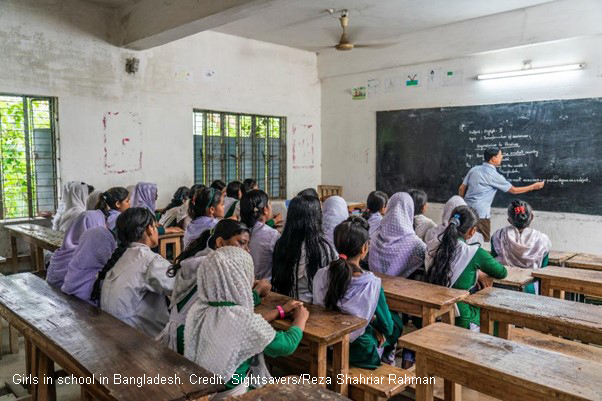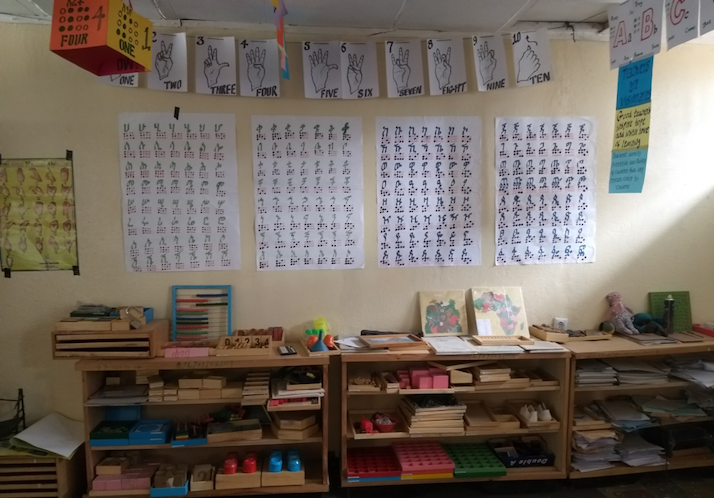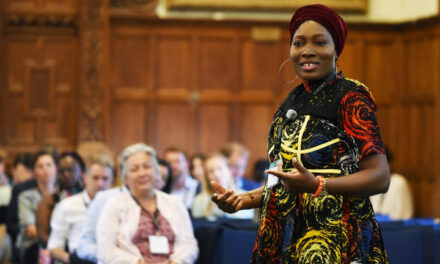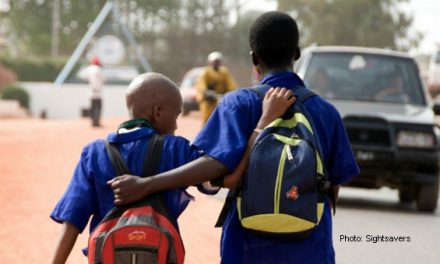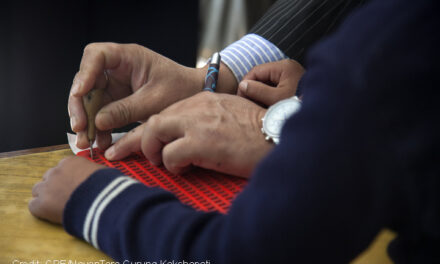This blog was written by Liesbeth Roolvink, Sightsavers, and originally published on the Global Partnership for Education blog on 4 June 2021.
Building a truly inclusive education system is the only way to respond effectively to the current learning crisis and to ensure inclusive and equitable quality education for all children and learners, wherever and whoever they are.
Every child has the right to education, but children with disabilities, especially girls, are missing out. We estimated that 33 million children with disabilities in low- and lower-middle-income countries are currently out of school – and during the pandemic the barriers they face have only increased.
Gender equality in education is key to COVID-19 recovery and building back equal.
This is a critical year for girls’ education and time is pressing. The world has only 9 years to deliver on Sustainable Development Goal (SDG) 4: quality education for all children everywhere, and SDG 5: gender equality and women and girls’ empowerment. Urgent action is required!
Amrita Rejina Rosario, Sightsavers’ country director in Bangladesh and Convener of the national Disability Alliance on SDGs, shares about the situation in Bangladesh: “Our national Education Policy promotes gender equality but despite the policy support, girls and women face multiple challenges and ensuring inclusive education appears to be the biggest challenge.
There are about 1.6 million school aged children with disabilities in Bangladesh, and only 20,000 have access to education.
—————–
Covid has not only shut down the schools but also widened the gender gap in education. We must make sure that everyone, especially girls, has access to quality education that is inclusive.
—————–
Educating a girl is an investment in humanity and should therefore be the highest priority, irrespective of geographical locations, nationalities, races, religions, or ethnicities. Governments and leaders should come forward to establish an equal world where girls and women with disabilities have equal access to education in the 21st century.”
The situation in Nigeria is quite similar. In recent years, the government made significant investments to make Nigeria’s education system more inclusive and accessible, which resulted in legal and policy frameworks on inclusive education at both federal and state levels.
However, despite these efforts Nigeria still faces a myriad of challenges as it has the greatest number of children out of school in the world – approximately 10 million. Most of these children aren’t in school because barriers relating to poverty, gender and disability.
According to Risikat Toyin Muhammed, Director of the Nigerian Women with Disability Self Reliance Foundation, “Education is one of the most important aspects for building the capacity of girls with disabilities to lift them out of poverty and empower them to be self-reliant. Girls with disabilities have an equal right to education and we need to work together to realize that. By empowering girls and women with disabilities, we are empowering a nation, free from stigma and discrimination.”
Zaliha, a Nigerian student, explains what inclusive education means to her: “At school I meet new friends and I learn new things so I know what life is all about. If I would have stayed home without going to school, I wouldn’t have known these things. I am calling on the government to help us because there are many girls with disabilities, like me, who would love to be in school but their parents can’t afford tuition.” Her friend Hamidat agrees, saying:
—————–
“Education is very important, and not having an education is also a form of disability.”
—————–
Building a truly inclusive education system is the only way to respond effectively to the current learning crisis and to ensure inclusive and equitable quality education for all children and learners, wherever and whoever they are.
The upcoming G7 and Global Education summits have both named girls’ education as a key focus, ahead of the Global Disability Summit in 2022. As we look back on a year of unprecedented disruption to education, and girls’ education in particular, this political will is very welcome.
However, we want to see this commitment turn into action and the upcoming events are pivotal moments for politicians to recommit to their SDG promise to ensure children with disabilities are not left behind. This is even more important as countries address the learning crisis resulting from the global pandemic.
Sightsavers’ Equal World campaign is calling on world leaders and governments to make inclusive, quality education available and accessible to children with disabilities, particularly girls.

